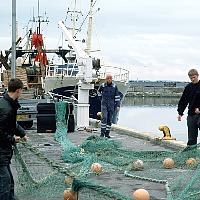(BRUSSELS) – The EU Council reached political agreement Wednesday on 2020 catch limits for the main commercial fish stocks in the Atlantic, the North Sea and international fisheries in which EU vessels participate.
The quota-setting exercise took several hours of negotiations before they reached agreement. The agreement is a balanced one, said Finland’s fisheries minister Jari Leppa, for the EU presidency: “one that reconciles all the objectives of the Common Fisheries Policy – environmental and socio-economic sustainability – to the benefit of the fish stocks, fishing sector and the EU citizens at large.”
With today’s agreement the Council restated its strong commitment to the objective of the CFP – environmental, economic and social sustainability – the provisions of the multiannual management plans currently in force, and the best available scientific advice.
In light of the difficulties faced by EU fishermen in relation to mixed fisheries in certain areas and the risk of choke species, the Council decided to continue for one year the previously agreed pool mechanism for quota exchanges. Choke species are those that have a low quota that, when exhausted, can cause a vessel to stop fishing even if it still has quota for other species.
In order to address the difficult situation of cod and whiting stocks in the Celtic Sea and cod in Kattegat, the Council decided to introduce remedial measures with the aim of improving the selectivity of fishing gears and reducing bycatches.
Concerning seabass, it was decided to slightly increase the by-catch levels in the Northern areas and grant additional flexibility in their management. The bag limit for seabass recreational fisheries was set to two specimen per fisherman per day under certain conditions, and only from 1 March to 30 November 2020 for Northern seabass.



